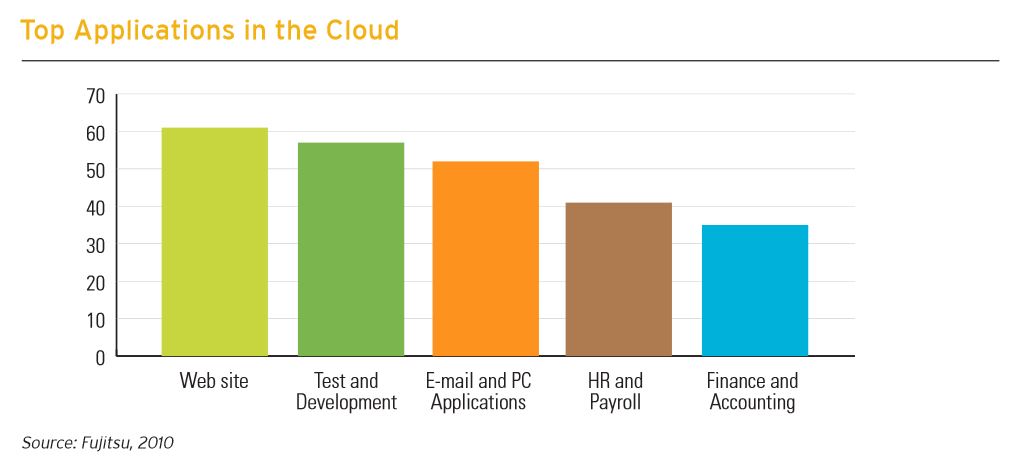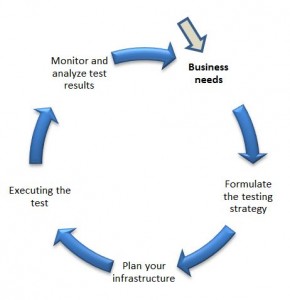In our last ICCLab newsletter, in the cloud economics tutorial, we introduced how cloud infrastructures could be utilized for off-loading the variable and unpredictable resource needs. This is one of the basic principles of public cloud business. The InIT ICCLab cloud-economics lecture provides extensive use case studies and lab exercises on these topics.
1. Use Cases
Within the editorial, the same newsletter reported another use case related to the deployment of performing environment for measurements and tests based on the public cloud. Hence this represent another good opportunity to utilize cloud based infrastructures.
Even GreenPages introduce these concept as enterprise case, however it can be extended to other actors with similar needs. For example, requirements to simulate production conditions for testing, while not affecting live deployments. With cloud services, suitable environments can be provisioned for apps development teams without affecting production environments, and then can be decommissioned with resulting charge-back reports for the respective cost centers. The Cloud will solve complex business needs with efficient, replicable and cost-effective solutions. With traditional hardware infrastructure, setting up a dedicated development environment could be expensive and time consuming. Unlike physical test environment labs, the tests in the cloud enable to offer architects access to test environments on demand with no resource constraints and eliminating capital expenditure.
2. Automation for Operating costs saving
Compared to traditional test environments (server based) the cloud allows to reduce IT operating costs by utilizing the automation and orchestration features. In addition to these savings, the organization can redirect key resources for manual configuration activities of more mission-critical and value-added tasks increasing the globally the margins. Test cloud environments allow working with live environments for their testing services and not just modeling tools. The scenario prepared for tests are closer to the final production configuration therefore increasing productivity and lowering the risks in the IT environment.
3. What is the best strategy for test deployment in the cloud?
As test configuration may grow in complexity for fast delivery of innovative applications to the marketplace. It is interesting to see how to reduce the time to plan, install and validate test environments. One key aspect is to consider that the cloud enables provisioning of test infrastructures on demand to maximize the utilisation of the asset. Feasibility studies are required to find the scenarios in which, moving testing to the cloud, can benefit the organization. Cost analysis should be made for private and public cloud utilisation with a correct mix.
The steps that should be followed to move, more effectively, applications in the cloud would be:
- Business needs and understanding of the benefit of the cloud
Define the business and technical objectives of moving a particular testing project to the cloud, to gain more from your cloud investment
- Formulate the testing strategy
The test strategies should clearly answer what is intended to be achieved by moving testing to the cloud, including cost savings, easy access to infrastructure, short cycle times, etc. The economics need to be analysied for defined type of cloud tests, the risks and the duration of the tests (costs).
- Plan your infrastructure
To define the infrastructure requirements necessary for building a test environment (private and public cloud). In case of public cloud, the service provider offers & prices should be an input (costs, terms and conditions, exit or movement to another service provider).
- Executing the test
The applications are tested according to the defined test strategy. Optimal utilization of the test infrastructure has to be defined to achieve cost benefits.
- Monitor and analyze test results
Monitoring of test results in real-time to understand and evaluate capacity and performance issues. The monitoring will consider also the financial performance of cloud services. The test results could be mined in the cloud and their analytics cloud also take advantages of data science and bigdata technologies. This represents another opportunity.
4. Our experience with testing on the cloud
ICC_Lab is investing a lot on infrastructures dedicated to the cloud and currently we have two OpenStack based installations. Some of them have test environments that will be used for internal projects and cooperation projects in the FI-PPP and H2020 programs.
The advantage of being able to use a cloud environment for testing is clear in our everyday activities. A typical concrete use case is that of setting up backend services running on a certain number of virtual machines, that can be easily (re-)created and destroyed in a very short time and without affecting any other running activity.
These testing backends represent a very convenient and reliable point of presence for the applications that need them, but at the same time, the flexibility of the cloud is such that reorganizing or radically changing the testing environment comes at a very low effort.
Some frequent use cases include:
- Setting up cloud environments to support applications running locally during the development cycle. Using the cloud approach instead of having local testing environments ensures a higher degree of consistency and reliability.
- Run automated tests against cloud backends.
- Support demonstrations. This is a particularly useful scenario, as the testing environment running on the cloud can be easily used to showcase demos of our applications.
Another factor to consider is that a service or the applications using it, can be easily moved from the testing to the pre-production phase. One of the internal projects we are currently developing, requires a Swift backend and, in a longer time frame, nothing to small changes will be required if we will want to distributed our application publicly and still have it running as we expect.
On a different perspective than that of testing applications we are developing, we often use our cloud to setup temporary services (e.g., open source frameworks) for evaluation or analysis purposes. This kind of testing takes great advantage from the “on-demand, self-service” factor of cloud computing!
by Antonio Cimmino, Vincenzo Pii


Quite insightful…While implementing cloud testing infrastructure, QA teams need to manage certain challenges that cloud testing poses….
cloud testing poses. Here’s an indicative solution http://bit.ly/Yzaaf2